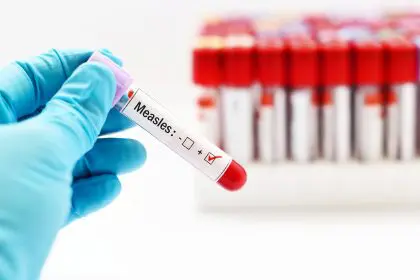A respiratory virus that once primarily affected birds and rarely infected humans has undergone a concerning transformation. H5N1, commonly known as bird flu, has established an unprecedented foothold across the United States, creating a situation that health officials are monitoring with heightened vigilance.
Since March 2024, the virus has impacted dairy operations in all 50 states, infected dozens of people, and prompted renewed discussions about pandemic preparedness. While the situation remains manageable, the evolving nature of the outbreak has led to increased health surveillance and practical precautions.
The rapid spread across American dairy farms
The current H5N1 situation represents a significant departure from historical patterns. The virus has infiltrated over 1,000 dairy herds nationwide since March 2024, affecting cattle across diverse geographical regions. This agricultural spread serves as the primary reservoir from which human exposures have occurred.
The agricultural impact extends beyond immediate animal health concerns. Dairy producers face economic challenges while implementing enhanced biosecurity measures aimed at containing the outbreak. These protective protocols include restricted farm access, specialized protective equipment for workers, and increased testing of herds.
Health agencies have established farm-specific guidance designed to minimize virus transmission while maintaining essential dairy operations. These measures highlight the delicate balance between economic necessities and public health priorities during an evolving health situation.
Human cases reveal changing transmission patterns
Perhaps most concerning is the transformation in how H5N1 spreads to humans. The virus has infected more than 70 people across multiple states—primarily individuals with direct contact with affected cattle or raw milk products. This represents a substantial increase from historical patterns when human infections remained rare and isolated.
A documented fatality in Louisiana marked a somber milestone in the current outbreak. The case involved an individual with multiple underlying health conditions who had contact with infected livestock.
Most infected individuals report mild to moderate symptoms typical of respiratory illnesses, including fever, cough, and fatigue. A smaller percentage experience more serious complications requiring medical intervention. Health officials note that the current virus strain appears less virulent in humans than previous H5N1 variants, though its increased transmissibility remains concerning.
The epidemiological pattern shows a clear risk concentration among dairy workers, veterinarians, and others with occupational exposure to infected animals. This targeted risk profile has helped health officials implement focused protective measures rather than broad societal restrictions.
Genetic monitoring reveals concerning evolutionary changes
Virological surveillance has documented subtle but meaningful changes in the H5N1 virus structure. Laboratory analysis confirms that the current strain has acquired genetic adaptations that enhance its ability to replicate in mammalian hosts—a significant shift from its traditional avian preference.
These adaptations explain the unprecedented spread among cattle populations and the increased instances of human infection. However, the virus has not yet demonstrated sustained human-to-human transmission—a critical threshold that would escalate public health concerns substantially.
Genetic sequencing efforts have intensified across multiple research institutions, with scientists tracking mutation patterns that might signal increased human adaptation. This molecular surveillance represents an essential early warning system for detecting potentially dangerous viral evolution before widespread transmission occurs.
The genetic data gathered thus far indicates a virus in transition—one that has gained new capabilities but has not yet optimized for efficient human spread. This evolutionary moment presents both a challenge and an opportunity for preventive intervention.
The measured public health response
Federal and state health authorities have implemented a coordinated response framework centered on containment rather than alarm. This approach acknowledges the seriousness of the situation while avoiding counterproductive panic.
Enhanced surveillance systems now monitor suspected cases across healthcare networks nationwide. Testing capacity has expanded dramatically, with specialized laboratories processing samples from both animals and humans with potential exposure. This testing infrastructure builds upon capabilities developed during the COVID-19 response.
A strategic national stockpile of antiviral medications effective against influenza viruses has been reviewed and positioned for rapid deployment if needed. These antiviral therapies can reduce symptom severity when administered early in the infection course.
The development pipeline for H5N1 vaccines has accelerated, with existing formulations being assessed for effectiveness against the current strain. Several vaccine manufacturers have initiated production preparations that would allow rapid scaling if the situation warrants mass immunization.
Public health communications have emphasized transparent information sharing without inducing unnecessary anxiety. This balanced messaging approach reflects lessons learned from previous outbreak responses, where clear communication proved essential for public cooperation.
Practical precautions without overreaction
Health authorities have outlined specific protective measures for those at elevated risk while emphasizing that general public risk remains low. These targeted recommendations include:
- Farm workers should use respiratory protection and gloves when handling potentially infected animals or their secretions. This occupational safety approach creates a barrier against the primary transmission route.
- Pasteurization effectively eliminates the virus from milk products. Consumers should avoid raw milk consumption, particularly from areas with confirmed animal infections.
- Wild bird interactions require cautious management, as avian populations continue to carry various H5N1 strains. Hunters and wildlife workers should follow handling guidelines when dealing with wild birds.
- Standard hygiene practices serve as effective frontline defense. Regular handwashing, respiratory etiquette, and staying home when ill remain practical preventive measures.
- Seeking prompt medical attention for respiratory symptoms following animal exposure enables early intervention and helps surveillance efforts track potential spread.
These measured precautions reflect the current risk assessment while providing actionable guidance for those in higher-risk categories. The approach balances vigilance with proportionality, avoiding both complacency and unnecessary restrictions.
The current H5N1 situation illustrates both vulnerabilities and strengths in the American public health system. The rapid identification of the outbreak, coordinated response, and transparent risk communication demonstrate significant improvements in health security infrastructure.
At the same time, the outbreak highlights the continuing evolutionary pressure on zoonotic viruses—those that can jump from animals to humans—to adapt in ways that potentially threaten human health. This biological reality underscores the need for sustained investment in surveillance, research, and response capabilities.
The memory of COVID-19 inevitably colors perceptions of the current situation. Health officials acknowledge these concerns while emphasizing key differences in virus characteristics, available countermeasures, and institutional readiness compared to 2020.
The experience of navigating a global pandemic has created valuable institutional knowledge across health agencies. Protocols developed during COVID-19—from testing strategies to supply chain management—have been refined and remain operational, creating a more resilient response foundation.
The scientific community maintains that preparedness represents the most effective strategy. The current situation serves as a practical test of systems designed to identify and contain emerging health threats before they reach pandemic proportions.
While the H5N1 situation requires serious attention, the coordinated response thus far demonstrates the value of investments in public health infrastructure. The coming months will reveal whether these systems can effectively manage the evolving risk while minimizing disruption to daily life.
Health officials continue to monitor the situation with a combination of scientific rigor and practical pragmatism—acknowledging the genuine concerns while pursuing a measured approach guided by evidence rather than fear.

















